Abstract
The resistance mechanisms of more than 2,000 aminoglycoside-resistant gram-negative aerobic bacteria were estimated by a method that assigned a biochemical mechanism based on susceptibility to selected aminoglycosides. Strains from hospitals in Japan, Formosa, and Korea (the Far East) were compared with strains from Chile and the United States. Of the strains from Chile, 90% had an aminoglycoside resistance pattern indicative of the 3-N-acetyltransferase [AAC(3)-V] enzyme. Of the strains from the Far East, 78% had susceptibility patterns suggesting the presence of AAC(6') enzymes. In contrast, strains from the United States had a wider variety of resistance mechanisms including 2''-O-adenylyltidyltransferase [ANT(2'')], AAC(3), AAC(6'), and AAC(2'). Reflecting these differences in resistance patterns, the frequencies of resistance to gentamicin, tobramycin, dibekacin, and amikacin in strains from the United States were different from those in strains from the Far East. These differences seem to be correlated with different aminoglycoside usage in the two regions. In the United States, where gentamicin was the most widely used aminoglycoside, 92% of the strains were resistant to gentamicin, 81% were resistant to dibekacin, and 8.8% were resistant to amikacin. In the Far East, dibekacin and kanamycin were widely used in the past and more recently amikacin has been frequently used. Of the strains from this region, 99% were resistant to dibekacin, 85% were resistant to gentamicin, and 35% were resistant to amikacin.
Full text
PDF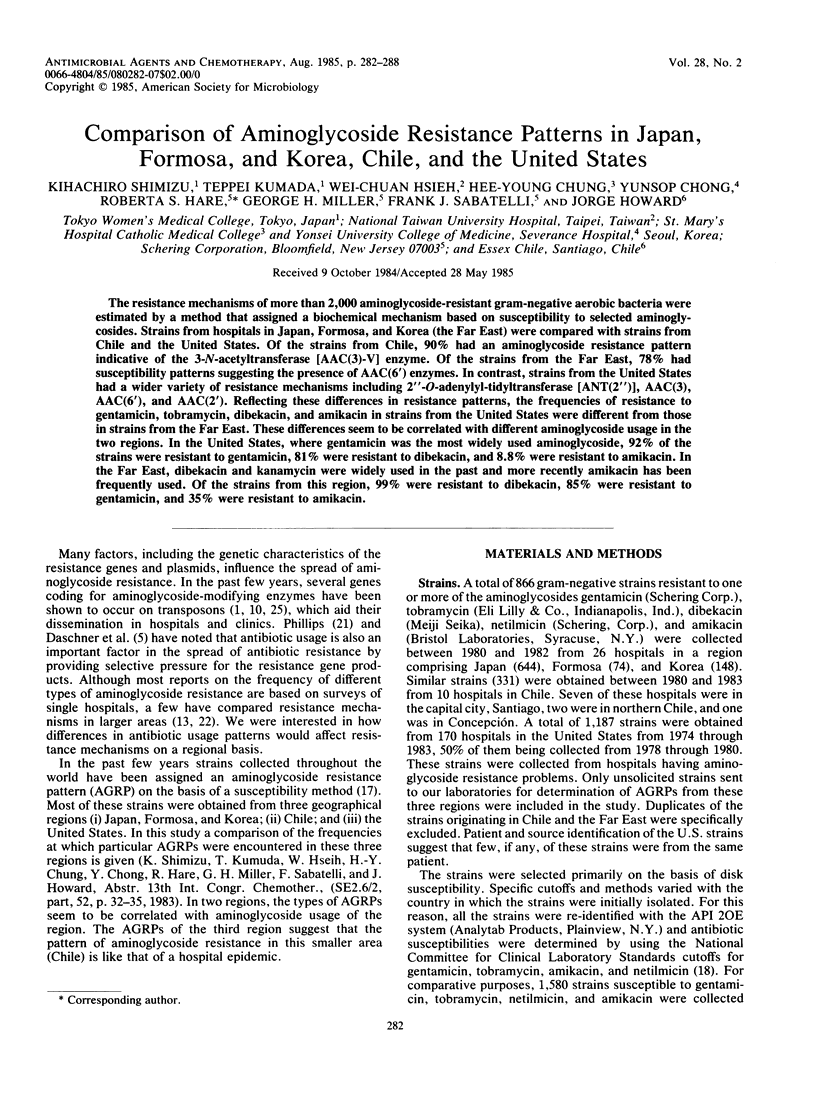
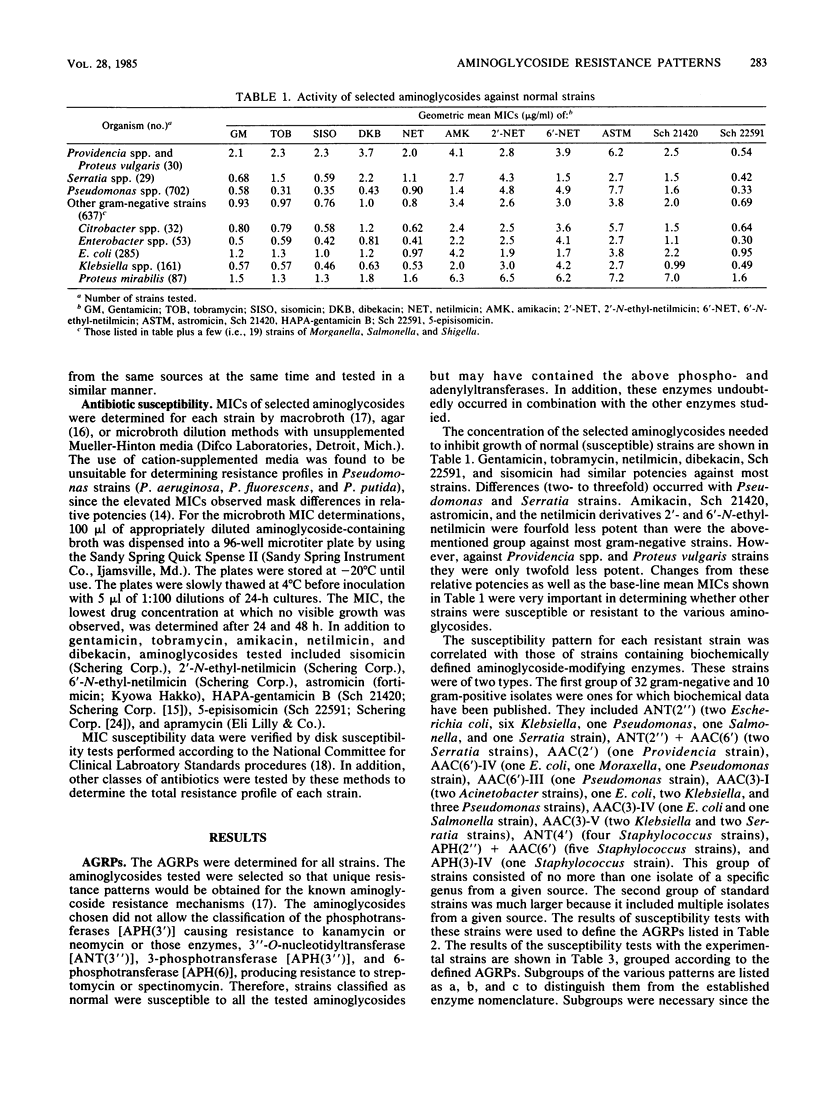
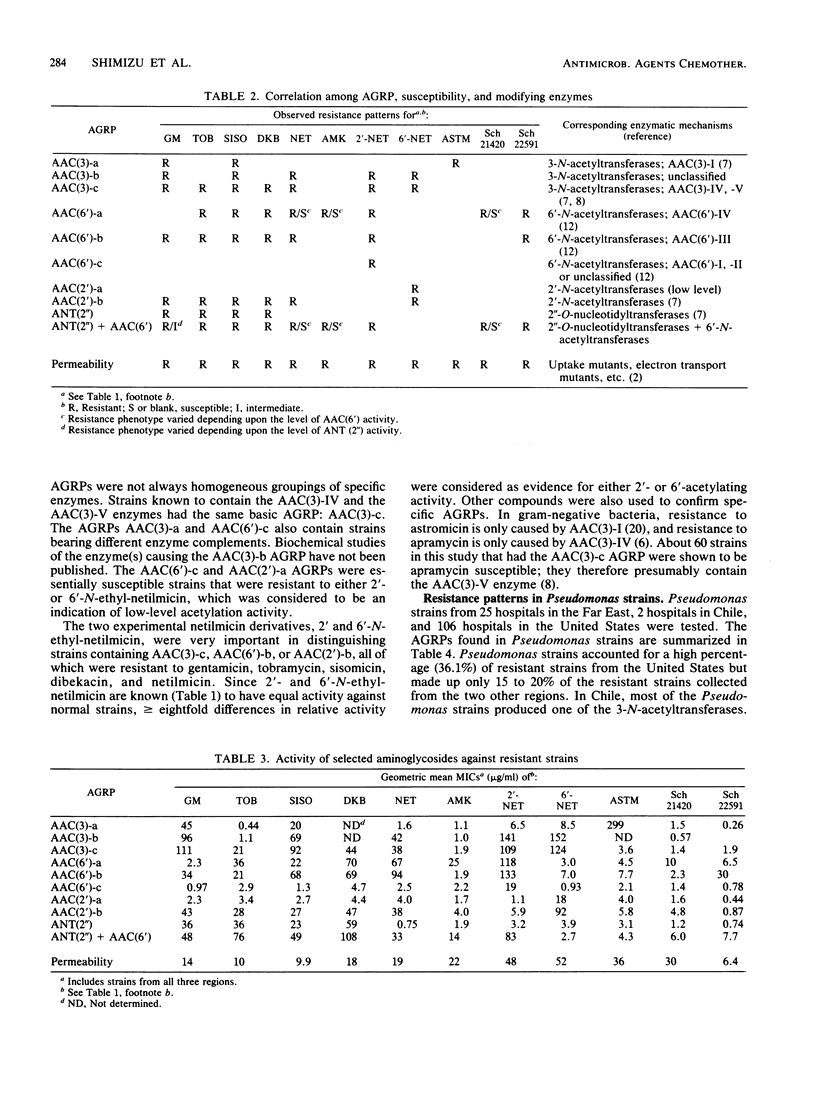
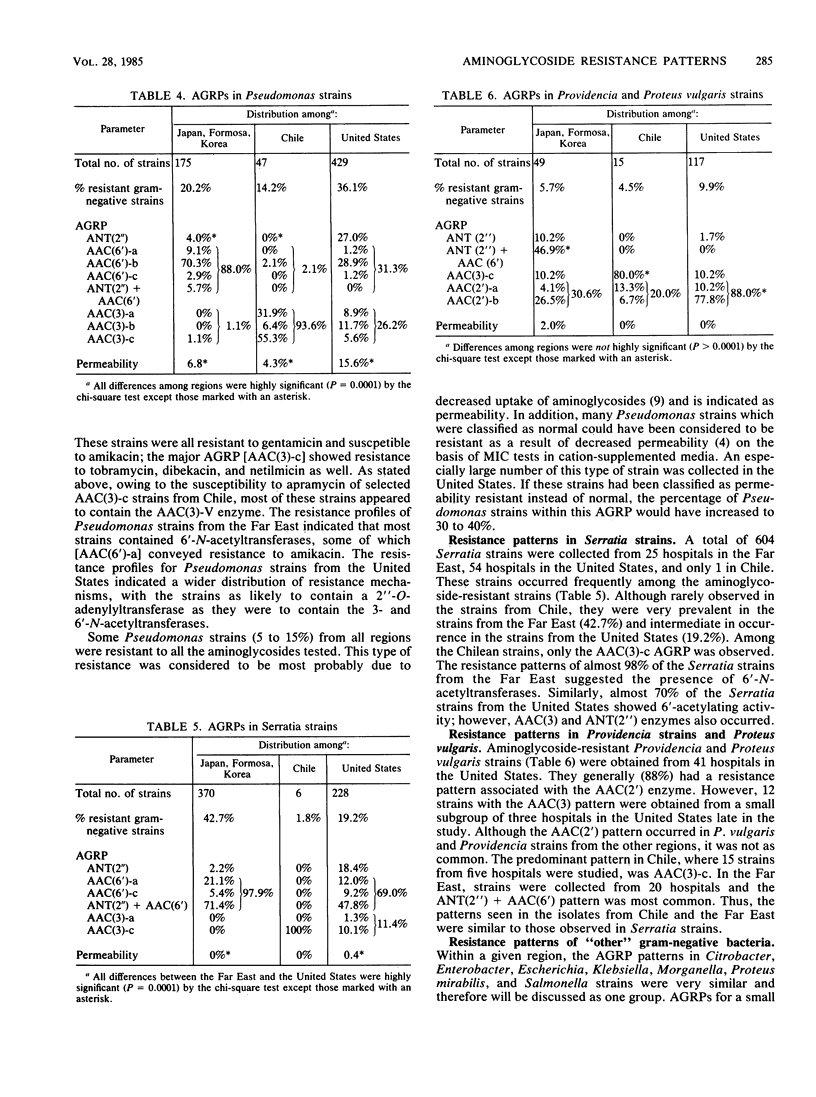
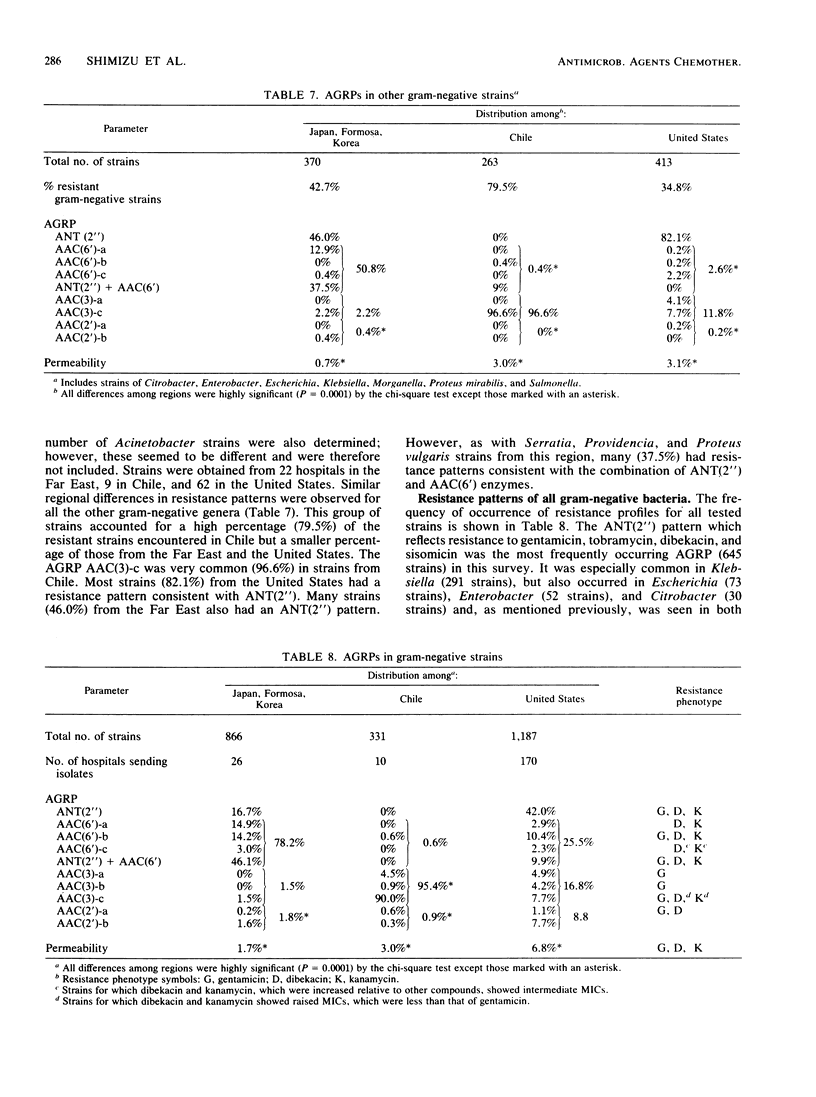
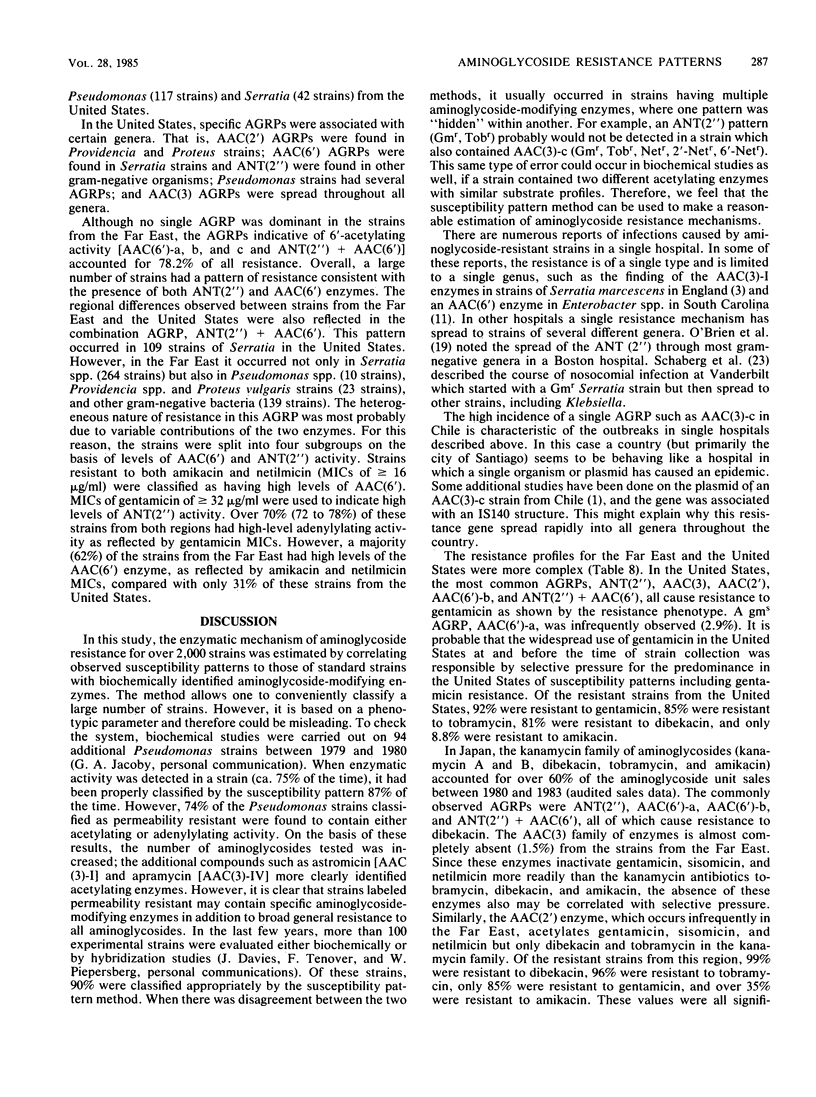
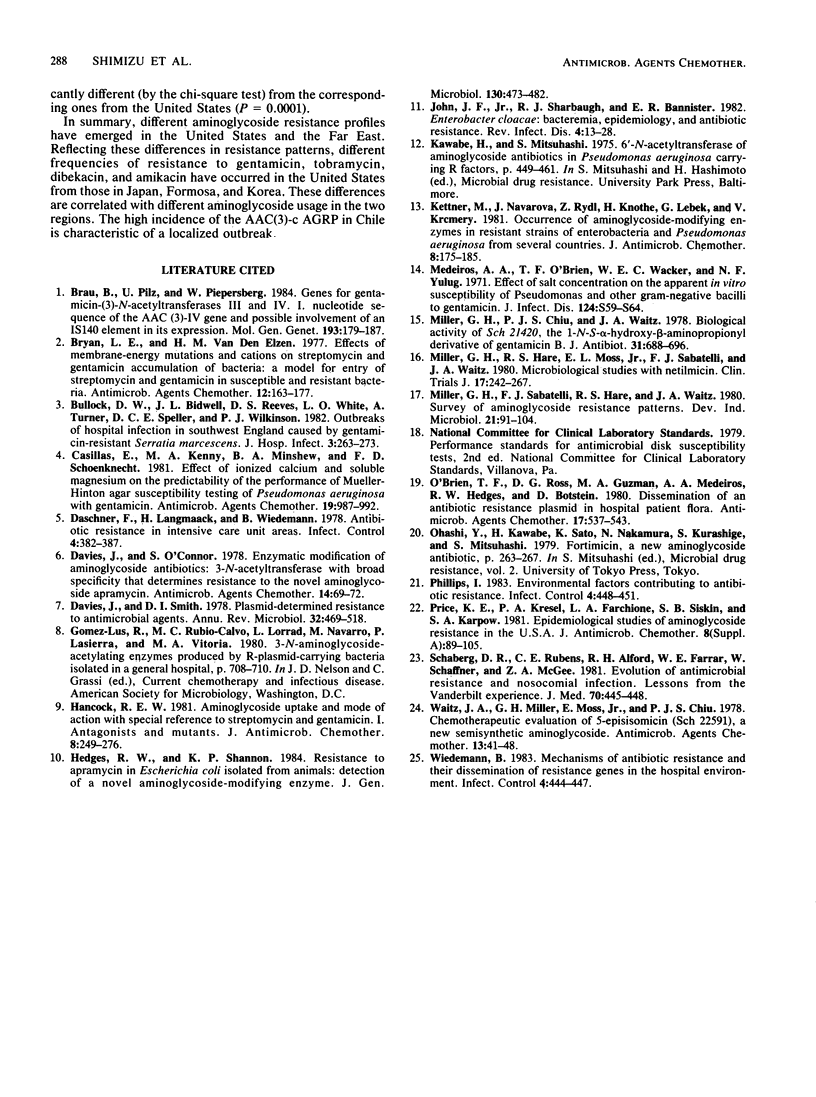
Selected References
These references are in PubMed. This may not be the complete list of references from this article.
- Bryan L. E., Van Den Elzen H. M. Effects of membrane-energy mutations and cations on streptomycin and gentamicin accumulation by bacteria: a model for entry of streptomycin and gentamicin in susceptible and resistant bacteria. Antimicrob Agents Chemother. 1977 Aug;12(2):163–177. doi: 10.1128/aac.12.2.163. [DOI] [PMC free article] [PubMed] [Google Scholar]
- Bräu B., Pilz U., Piepersberg W. Genes for gentamicin-(3)-N-acetyltransferases III and IV: I. Nucleotide sequence of the AAC(3)-IV gene and possible involvement of an IS140 element in its expression. Mol Gen Genet. 1984;193(1):179–187. doi: 10.1007/BF00327434. [DOI] [PubMed] [Google Scholar]
- Bullock D. W., Bidwell J. L., Reeves D. S., White L. O., Turner A., Speller D. C., Wilkinson P. J. Outbreaks of hospital infection in southwest England caused by gentamicin-resistant Serratia marcescens. J Hosp Infect. 1982 Sep;3(3):263–273. doi: 10.1016/0195-6701(82)90045-7. [DOI] [PubMed] [Google Scholar]
- Casillas E., Kenny M. A., Minshew B. H., Schoenknecht F. D. Effect of ionized calcium and soluble magnesium on the predictability of the performance of Mueller-Hinton agar susceptibility testing of Pseudomonas aeruginosa with gentamicin. Antimicrob Agents Chemother. 1981 Jun;19(6):987–992. doi: 10.1128/aac.19.6.987. [DOI] [PMC free article] [PubMed] [Google Scholar]
- Daschner F., Langmaack H., Wiedemann B. Antibiotic resistance in intensive care unit areas. Infect Control. 1983 Sep-Oct;4(5):382–387. doi: 10.1017/s0195941700059798. [DOI] [PubMed] [Google Scholar]
- Davies J., O'Connor S. Enzymatic modification of aminoglycoside antibiotics: 3-N-acetyltransferase with broad specificity that determines resistance to the novel aminoglycoside apramycin. Antimicrob Agents Chemother. 1978 Jul;14(1):69–72. doi: 10.1128/aac.14.1.69. [DOI] [PMC free article] [PubMed] [Google Scholar]
- Davies J., Smith D. I. Plasmid-determined resistance to antimicrobial agents. Annu Rev Microbiol. 1978;32:469–518. doi: 10.1146/annurev.mi.32.100178.002345. [DOI] [PubMed] [Google Scholar]
- Hancock R. E. Aminoglycoside uptake and mode of action--with special reference to streptomycin and gentamicin. I. Antagonists and mutants. J Antimicrob Chemother. 1981 Oct;8(4):249–276. doi: 10.1093/jac/8.4.249. [DOI] [PubMed] [Google Scholar]
- Hedges R. W., Shannon K. P. Resistance to apramycin in Escherichia coli isolated from animals: detection of a novel aminoglycoside-modifying enzyme. J Gen Microbiol. 1984 Mar;130(3):473–482. doi: 10.1099/00221287-130-3-473. [DOI] [PubMed] [Google Scholar]
- John J. F., Jr, Sharbaugh R. J., Bannister E. R. Enterobacter cloacae: bacteremia, epidemiology, and antibiotic resistance. Rev Infect Dis. 1982 Jan-Feb;4(1):13–28. doi: 10.1093/clinids/4.1.13. [DOI] [PubMed] [Google Scholar]
- Kettner M., Navarová J., Rýdl Z., Knothe H., Lebek G., Krcméry V. Occurrence of aminoglycoside-modifying enzymes in resistant strains of enterobacteria and Pseudomonas aeruginosa from several countries. J Antimicrob Chemother. 1981 Sep;8(3):175–185. doi: 10.1093/jac/8.3.175. [DOI] [PubMed] [Google Scholar]
- Medeiros A. A., O'Brien T. F., Wacker W. E., Yulug N. F. Effect of salt concentration on the apparent in-vitro susceptibility of Pseudomonas and other gram-negative bacilli to gentamicin. J Infect Dis. 1971 Dec;124 (Suppl):S59–S64. doi: 10.1093/infdis/124.supplement_1.s59. [DOI] [PubMed] [Google Scholar]
- Miller G. H., Chiu P. J., Waitz J. A. Biological activity of SCH 21420, the 1-N-S-alpha-hydroxy-beta-aminopropionyl derivative of gentamicin B. J Antibiot (Tokyo) 1978 Jul;31(7):688–696. doi: 10.7164/antibiotics.31.688. [DOI] [PubMed] [Google Scholar]
- O'Brien T. F., Ross D. G., Guzman M. A., Medeiros A. A., Hedges R. W., Botstein D. Dissemination of an antibiotic resistance plasmid in hospital patient flora. Antimicrob Agents Chemother. 1980 Apr;17(4):537–543. doi: 10.1128/aac.17.4.537. [DOI] [PMC free article] [PubMed] [Google Scholar]
- Phillips I. Environmental factors contributing to antibiotic resistance. Infect Control. 1983 Nov-Dec;4(6):448–451. doi: 10.1017/s0195941700058446. [DOI] [PubMed] [Google Scholar]
- Price K. E., Kresel P. A., Farchione L. A., Siskin S. B., Karpow S. A. Epidemiological studies of aminoglycoside resistance in the U.S.A. J Antimicrob Chemother. 1981 Jul;8 (Suppl A):89–105. doi: 10.1093/jac/8.suppl_a.89. [DOI] [PubMed] [Google Scholar]
- Schaberg D. R., Rubens C. E., Alford R. H., Farrar W. E., Schaffner W., McGee Z. A. Evolution of antimicrobial resistance and nosocomial infection. Lessons from the Vanderbilt experience. Am J Med. 1981 Feb;70(2):445–448. doi: 10.1016/0002-9343(81)90786-5. [DOI] [PubMed] [Google Scholar]
- Waitz J. A., Miller G. H., Moss E., Jr, Chiu P. J. Chemotherapeutic evaluation of 5-episisomicin (Sch 22591), a new semisynthetic aminoglycoside. Antimicrob Agents Chemother. 1978 Jan;13(1):41–48. doi: 10.1128/aac.13.1.41. [DOI] [PMC free article] [PubMed] [Google Scholar]
- Wiedemann B. Mechanisms of antibiotic resistance and their dissemination of resistance genes in the hospital environment. Infect Control. 1983 Nov-Dec;4(6):444–447. doi: 10.1017/s0195941700058434. [DOI] [PubMed] [Google Scholar]


